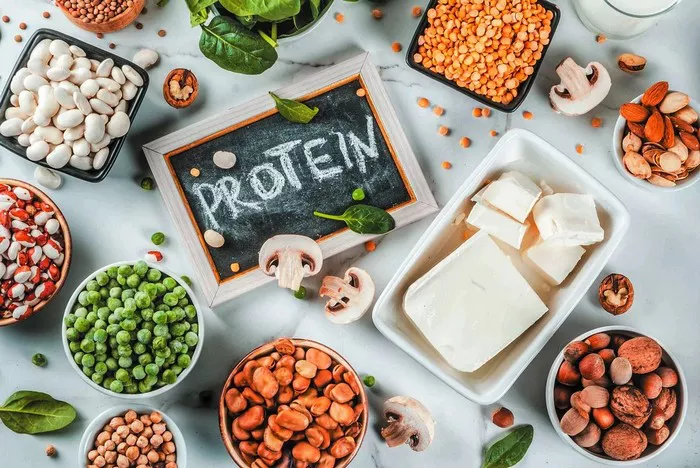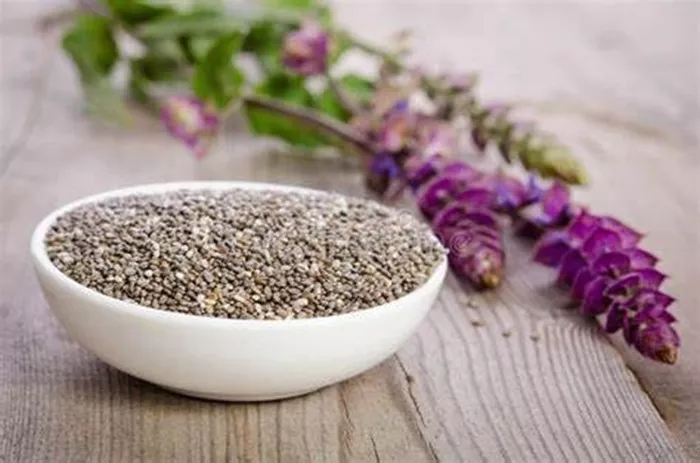In the field of fitness and exercise physiology, anaerobic exercise and aerobic exercise are two fundamental forms of physical activity. Both play crucial roles in maintaining and improving physical fitness, but they have distinct characteristics and mechanisms. Understanding the differences between them is essential for individuals to make informed decisions about their exercise regimens and for fitness professionals to prescribe appropriate training programs.
This article comprehensively analyzes the differences between anaerobic exercise and aerobic exercise from multiple aspects, including energy metabolism, physiological responses, training effects, and application scenarios. By understanding these differences, fitness enthusiasts and professionals can better design personalized training programs to achieve specific fitness goals and optimize physical health and performance.
Energy Metabolism
Aerobic Exercise
Aerobic exercise primarily relies on aerobic energy metabolism. During aerobic activities, such as long-distance running, cycling, or swimming, the body uses oxygen to break down carbohydrates, fats, and to a lesser extent, proteins. The process occurs in the mitochondria of cells and involves a series of complex biochemical reactions. The Krebs cycle and the electron transport chain are key components of aerobic metabolism. In this process, a large amount of adenosine triphosphate (ATP) is produced, which is the main energy currency of the body. For example, during a marathon run, the runner’s body continuously oxidizes glucose and fatty acids to generate the ATP needed to sustain the prolonged activity. The availability of oxygen is crucial for aerobic metabolism to proceed efficiently. As the exercise intensity increases gradually, the body can adjust its oxygen uptake and utilization to meet the energy demands.
Anaerobic Exercise
In contrast, anaerobic exercise occurs in the absence or limited supply of oxygen. There are two main anaerobic energy systems: the phosphagen system and the glycolytic system. The phosphagen system, which includes creatine phosphate (CP), provides immediate but short-lived energy. Creatine phosphate donates a phosphate group to adenosine diphosphate (ADP) to form ATP, allowing for rapid bursts of high-intensity activity, such as a short sprint or a single powerful lift. However, the phosphagen system can only sustain activity for a few seconds. The glycolytic system then takes over. Glycolysis breaks down glucose anaerobically into pyruvate, producing a small amount of ATP. In the absence of sufficient oxygen, pyruvate is converted into lactate. Anaerobic exercise, like a series of intense weightlifting repetitions or a 400-meter sprint, mainly depends on these anaerobic energy systems. The energy production is rapid but less efficient in terms of ATP yield compared to aerobic metabolism and leads to the accumulation of lactate, which can cause muscle fatigue and a burning sensation.
Physiological Responses
Heart Rate and Cardiac Output
Aerobic Exercise
During aerobic exercise, the heart rate gradually increases in proportion to the exercise intensity. As the body demands more oxygen to fuel the working muscles, the heart pumps blood more efficiently. The cardiac output, which is the volume of blood pumped by the heart per minute, also rises. This increase in cardiac output is achieved through an increase in both heart rate and stroke volume (the amount of blood ejected by the heart with each beat). For example, during a moderate-intensity aerobic workout like jogging at a steady pace, the heart rate may reach around 60-80% of the maximum heart rate. The increase in cardiac output helps to deliver oxygen-rich blood to the muscles and remove carbon dioxide and other waste products. Over time, regular aerobic exercise can lead to adaptations in the cardiovascular system, such as an increase in the size and strength of the heart muscle, improved blood vessel elasticity, and enhanced oxygen-carrying capacity of the blood.
Anaerobic Exercise
Anaerobic exercise, especially high-intensity anaerobic activities, causes a rapid and significant increase in heart rate. In a short, intense burst of activity like a maximal-effort sprint, the heart rate can quickly approach or even exceed the maximum heart rate. The cardiac output also increases, but the increase is mainly due to a large increase in heart rate rather than stroke volume. The cardiovascular system is under more acute stress during anaerobic exercise compared to aerobic exercise. However, the duration of this intense cardiovascular response is relatively short. Repeated bouts of high-intensity anaerobic exercise can also have beneficial effects on the cardiovascular system, such as improving the heart’s ability to tolerate and recover from high-intensity stress, but the adaptations are different from those of aerobic exercise.
Respiratory System
Aerobic Exercise
Aerobic exercise leads to a sustained increase in breathing rate and depth. The lungs work harder to take in more oxygen and expel carbon dioxide. The increase in ventilation is directly related to the increase in oxygen consumption by the body. As the exercise intensity rises, the minute ventilation (the total volume of air breathed in and out per minute) can increase severalfold. The respiratory muscles, including the diaphragm and intercostal muscles, become more efficient over time with regular aerobic training. Additionally, aerobic exercise can improve the diffusion capacity of the lungs, allowing for better gas exchange between the alveoli and the bloodstream. For example, a long-distance cyclist will have a higher tidal volume (the amount of air inhaled and exhaled with each normal breath) and a faster breathing rate during a race compared to at rest.
Anaerobic Exercise
During anaerobic exercise, the breathing rate also increases, but the pattern is different from aerobic exercise. In the initial stages of high-intensity anaerobic activity, there may be a brief period of breath-holding or very rapid, shallow breathing. This is because the body is focused on generating immediate power rather than on efficient oxygen uptake and carbon dioxide removal. As the anaerobic exercise continues, the breathing rate becomes more rapid and deeper to try to compensate for the oxygen debt that has accumulated. However, the overall ventilation during anaerobic exercise is not as well-regulated and sustained as in aerobic exercise. The respiratory system is more concerned with clearing the lactate and other byproducts of anaerobic metabolism rather than providing a continuous supply of oxygen for energy production.
Muscular Adaptations
Aerobic Exercise
Regular aerobic exercise leads to several muscular adaptations. Slow-twitch muscle fibers, which are more fatigue-resistant and better suited for endurance activities, are preferentially recruited. These fibers have a high density of mitochondria and are rich in myoglobin, which helps in oxygen storage and utilization. With prolonged aerobic training, the number and size of mitochondria in the muscle cells increase, enhancing the muscle’s ability to produce ATP aerobically. The capillaries surrounding the muscle fibers also proliferate, improving blood flow and oxygen delivery to the muscles. This results in an increase in muscle endurance, allowing an individual to perform aerobic activities for longer periods without fatigue. For example, a long-distance runner will have well-developed slow-twitch muscle fibers in the legs, enabling them to sustain running for hours.
Anaerobic Exercise
Anaerobic exercise primarily targets fast-twitch muscle fibers. These fibers are capable of generating rapid and powerful contractions but fatigue more quickly. Anaerobic training, such as weightlifting or sprinting, leads to an increase in the size and strength of fast-twitch muscle fibers. This is due to an increase in muscle protein synthesis and the activation of satellite cells, which contribute to muscle growth. The muscle fibers also develop a greater capacity to store and use creatine phosphate and glycogen, the substrates for anaerobic energy production. However, the increase in muscle endurance is not as significant as in aerobic exercise. Instead, the focus is on improving muscle power and strength for short, intense bursts of activity.
Training Effects
Body Composition
Aerobic Exercise
Aerobic exercise is highly effective in reducing body fat. It increases the body’s overall energy expenditure, which forces the body to utilize stored fat as a fuel source. Over time, regular aerobic workouts can lead to a significant decrease in body fat percentage. Additionally, aerobic exercise can help maintain or improve muscle tone to some extent, especially when combined with proper nutrition. For example, a person who engages in regular aerobic activities like swimming or aerobic dance classes may notice a reduction in waist circumference and an overall slimming effect.
Anaerobic Exercise
While anaerobic exercise also burns calories and can contribute to weight loss, its main effect on body composition is related to muscle building. By increasing muscle mass, anaerobic exercise can raise the basal metabolic rate. A higher basal metabolic rate means the body burns more calories at rest, which can indirectly help with weight management. Moreover, the increase in muscle mass gives the body a more toned and defined appearance. For instance, someone who regularly performs strength training exercises will have more prominent muscles and a lower body fat percentage if combined with a balanced diet.
Fitness Components
Aerobic Exercise
Aerobic exercise mainly improves cardiovascular endurance, which is the ability of the heart, lungs, and blood vessels to supply oxygen to the working muscles during prolonged physical activity. It also enhances flexibility to some degree, especially if the aerobic activity involves a wide range of motion, such as yoga or tai chi. However, the impact on muscular strength and power is relatively limited. For example, a person who trains for a triathlon will have excellent cardiovascular endurance but may not have the same level of muscular strength as a bodybuilder.
Anaerobic Exercise
Anaerobic exercise is focused on improving muscular strength, power, and speed. It can significantly increase the amount of force a muscle can generate and the speed at which it can contract. This is crucial for activities such as sprinting, jumping, and throwing. Anaerobic training also has a positive effect on bone density, as the stress placed on the bones during weight-bearing anaerobic exercises like weightlifting stimulates bone remodeling and increases bone strength. However, it does not have as much of an impact on cardiovascular endurance as aerobic exercise.
Application Scenarios
Athletic Training
Endurance Sports
For endurance athletes like marathon runners, triathletes, and long-distance cyclists, aerobic exercise is the cornerstone of their training. They spend a significant amount of time performing aerobic workouts at various intensities to build up their cardiovascular and muscular endurance. These athletes need to be able to sustain a relatively high level of activity for extended periods, and aerobic training helps them achieve this. For example, a marathon runner may have a weekly training plan that includes long, slow runs, tempo runs, and interval training, all of which are forms of aerobic exercise.
Power and Speed Sports
In sports that require power and speed, such as sprinting, jumping, and throwing events in track and field, anaerobic exercise is essential. Athletes in these disciplines focus on high-intensity anaerobic training, including sprint intervals, plyometric exercises, and heavy weightlifting. This type of training helps them develop the explosive power and speed necessary to perform well in their events. For instance, a sprinter will perform short sprints with maximal effort and long recovery periods to improve their anaerobic capacity and sprint performance.
General Fitness
Weight Management and Health Maintenance
For individuals looking to lose weight or maintain a healthy body weight and improve overall health, a combination of aerobic and anaerobic exercise is often recommended. Aerobic exercise helps burn calories and fat, while anaerobic exercise builds muscle mass and increases basal metabolic rate. For example, a person could engage in 3-5 days of aerobic activities like brisk walking or jogging and 2-3 days of anaerobic exercises such as bodyweight strength training or using resistance bands.
Functional Fitness
Anaerobic exercise is also beneficial for improving functional fitness, which is the ability to perform daily activities with ease and without injury. Exercises that target multiple muscle groups and improve balance, coordination, and strength, such as kettlebell workouts or circuit training, fall under the category of anaerobic exercise. These types of workouts can help individuals maintain their independence and quality of life as they age.
Conclusion
In conclusion, anaerobic exercise and aerobic exercise differ significantly in terms of energy metabolism, physiological responses, training effects, and application scenarios. Aerobic exercise is centered around aerobic energy metabolism, leads to sustained cardiovascular and respiratory adaptations, is excellent for improving cardiovascular endurance and reducing body fat, and is crucial for endurance sports and general health and weight management. Anaerobic exercise, on the other hand, relies on anaerobic energy systems, causes more acute cardiovascular and muscular responses, is focused on building muscular strength, power, and speed, and is essential for power and speed sports as well as functional fitness. Understanding these differences allows fitness enthusiasts and professionals to design more effective and personalized exercise programs to meet specific fitness goals, whether it is improving athletic performance, losing weight, or maintaining overall health and functionality. By incorporating both types of exercise into a well-rounded fitness routine, individuals can enjoy the comprehensive benefits of physical activity and optimize their physical well-being.
It is important to note that before starting any new exercise program, especially one that involves high-intensity anaerobic exercise, individuals should consult with a healthcare professional or a certified fitness trainer to ensure that the program is safe and appropriate for their current health status and fitness level. Additionally, proper warm-up and cool-down procedures should always be followed to minimize the risk of injury and enhance the effectiveness of the exercise.
Related topics:
How Can You Exercise Correctly on a Stationary Bike?

































